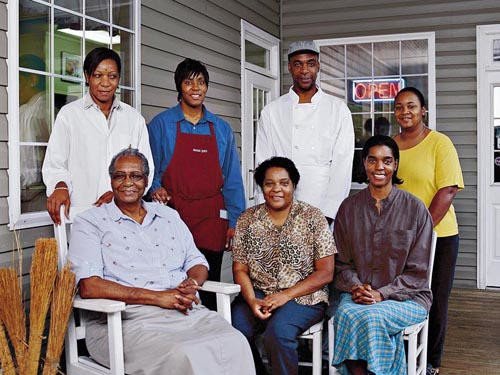
Back in 2016 or 2017 the Raleigh City Council established a “Blue Ribbon Committee”, to investigate the current CAC structure and to make recommendations.
Two of our very prominent African American Leaders were tasked with serving on this Committee! One who possibly had a vested interest in replacing the Organic CAC community engagement structure with his very own Synthetic 501 c4 community engagement structure.
The other person, I would lie to think, was blinded by the spotlights and just went along with the senior member from the African American Leadership ranks.
The Committee members and the report are available upon request submitted to the City Manager, Ruffin Hall.
I knew at the time who the leaders were on the panel! I went to several of the meetings and deposed each of them after most of the meetings and knew they were headed in a direction that I did not agree with, but what I did not know was that the one with his version of Synthetic Community Engagement was in fact planning on possibly replacing the Organic version and that anything he asked or any comment he made had to be interpreted in that light.
What I am trying feebly to say is that I was giving him the benefit of the doubt not knowing that he could be possibly setting the table for his Synthetic Community Engagement model to prosper at the expenses of the Organic CAC structure that was populated by the local citizens with published, transparent meetings that anyone could attend and their issues discussed and most times addressed and resolved.
Why, you ask have I set on this for so long? Only this week have I been made aware of this Synthetic Community Engagement entity and this is how it occurred.
I was asked to serve on the community board to help craft the propose City of Raleigh Housing Bond. When I got the call I was actually thinking about opposing the Bond, but I had a feeling that perhaps I could do more good participating.
During the first meeting, in light of this whole citizen engagement matter currently confronting this council, it was suggested that we have townhall meetings. On one of the power points slides, Wake Up Wake County was listed as a facilitator. I immediately suggested that the Raleigh Wake Citizens Association be a co-facilitator.
I am old enough to remember when the giants in our community that were truly community engagement experts, the likes of Ralph Campbell, Sr, John W. Winters, Sr, John Greene “Top”, Rev Charles Ward, Cliffornia Wimberley, Elizabeth Cofield and Linda Coleman were pounding the pavement!
These leaders in citizen engagement reached out to any and everyone to listen and work with them, through the then very powerful organization with a firm foothold in Organic Community Engagement, otherwise known as the Raleigh Wake Citizens Association.
So at our last Bond meeting there was a young lady sitting behind Sonia Barnes named Jasmine Childs. I was happy that new faces were cropping up. So we scheduled a Townhall meeting for Community Input for March 23rd and after the shooting near Sheetz I called a mutual associate to get Ms. Childs number. I called her and asked her would she reach out to her peers and ask them to attend and vigorously participate in the Townhall process.
At that time she informed me that this Synthetic Community Engagement entity, which she worked for, was not going to participate in anything that Wake Up Wake County was involved in and she went on to talk about the context of the dispute.
When that phone call ended I called Nathan Spencer with Wake Up, Wake County and asked him what the hell was going on! He then informed me, if I was hearing correctly, that the Board Chair of this Synthetic Community Engagement entity “wanted” the City of Raleigh, Community Development Director, Larry Jarvis fired and that they were going to file a lawsuit against the City.
When I heard this, I stated you got to be kidding, I know first hand the Board Chair stock in trade is be non controversial.
Now since the Council disbanded the CAC’s everyone wants to blame our Mayor, Mary Ann Baldwin. She is tough, but she plays her cards in the open if you have a one-on-one conversation with her) and Saige Martin the District D Council person who I finally met at Grace AME for a community meeting on the new Wake County Real Estate Property Re-evaluations.
But readers if you read the council back and forth from that sessions you will hear that the report from the “Blue Ribbon Committee” that our Board Chair of the Synthetic Community Engagement entity, endorsed recommended the abolishment of the CAC’s.
Now remember you have a new council, elected by the ‘YIMBY’ (yes in my back yard) proponents with a mandate for change and a report that was endorsed by the African American Leadership not yet known by many to also be the Board Chair of a Synthetic Community Engagement entity endorsing and I can only imagine lobbying for the abolishment of what, could possibly be his competition.
So if you want to challenge anyone give Mary Ann and Saige a break and give Courtney Crowder a call. Ask him his views on the value of Organic Community Engagement (like CAC’s aka Community Advisory Councils) vs. state wide Synthetic Community Engagement entities.
Ask him why he feels he needs to be the Quarterback?
Daniel Coleman



















